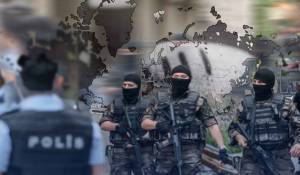
Iftikhar Firdous

December 11, 2025
By | Iftikhar Firdous , Ihsanullah Tipu Mehsud

n 2009, the Ittihadul Mujahideen (The Mujahideen Conglomerate) was pieced together with the efforts of Al-Qaeda. The agreement laced together commander Maulvi Nazir, Tehreek-e-Taliban Pakistan (TTP) founding leader, Baitullah Mehsud from South Waziristan and Hafiz Gul Bahadur (HGB) from the adjacent North Waziristan as well as Ilyas Kashmiri’s group – creating a haven for militant outfits in both North and South Waziristan tribal districts. The conglomerate lasted no more than a month until Bahadur separated ways. Baitullah and Maulvi Nazir were both killed in drone strikes in subsequent years, but their groups survived.
Fast-forwarding, 12 years later, two statements were released by the Tehreek-e-Taliban Pakistan (TTP) on June 3 and June 4, 2023, claiming two subsequent attacks on the Pakistani military as a “collaboration between the TTP and Hafiz Gul Bahadur”.
What are the circumstances that have brought both militant groups together once again?
An elusive figure, for years, Hafiz Gul Bahadur has been described as an “egotist” by most people that have met him. “He is more of a warlord than what defines a militant commander”, an official who was once involved in bringing him to negotiations with the Pakistani government in 2006 described him, “He considers himself as the leader of the Madakhel tribe, a sub-tribe of Uthmanzai Wazir and wants to continue the armed struggle in the footprints of the Faqir of Epi – a messiah complex.”
In his book, Inqilab-e-Mehsud, the TTP Chief, Noor Wali Mehsud has recalled a lesser-known account where the TTP in November 2016 had offered HGB to become Emir of the Mehsud tribe faction of the TTP – which at that time had serious differences with the then TTP Chief Mullah Fazlullah – or merge his group into the TTP Mehsud faction. The offer was rejected on both counts; however, HGB agreed to work collectively for protecting mutual interests in Afghanistan, fighting together against the Pakistani state, and announced the collaboration. “The agreement lasted less than a month, like every other agreement with him in the past”, the book states.
HGB moved to Khost and Paktia, Afghanistan along with the Madakhel tribe after the Pakistani military operation Zarb-e-Azb in 2014, blaming the Pakistani government for not abiding by the agreement of 2006/2007. Bahadur who was always considered to be a pro-government Taliban commander, turned the tide against the Pakistani state. In 2021, in order to squeeze the space against Bahadur – “because he hides in the thickets of his tribe”, as a senior Pakistani official put it – more than 7 thousand displaced Pakistani families from Afghanistan were repatriated; a process that is still continuing.
Almost all major attacks in North Waziristan have been traced back to HGB. In recent times he has established a new formation, Ittihad al-Mujahideen Khorasan, under which several smaller groups of militants have combined under one umbrella. Some of these groups are Jabhat Ansar Al-Mahdi Khorasan/Waziristan; Jaishul Fursan; and the suicide bombing cell, Al-Hamza Group which works under the Khalid bin Waleed Brigade. Unlike in the past, the group first published a video, showcasing the training of a suicide bombing cell and advanced weaponry; however, subsequently, a voice note attributed to the HGB deputy floated across the militant cyber landscape, urging the group members to forbid the use of and interaction with media: “the lesser the enemy knows about you, the better”, he instructed.
What do the recent joint attacks in Janikhel and Shawal in districts of Bannu and North Waziristan respectively mean?
As per various accounts, available with The Khorasan Diary, of both the TTP and HGB affiliated commanders, Al-Qaeda played a pivotal role back in 2009 in the formation of Ittehadul Mujahideen in Waziristan. However, in the present state when Al-Qaeda is keeping such a low profile to the extent that apparently, it has no active existence in the Af-Pak region, who could be the new entity that is nurturing the growing collaboration among various Pakistani Taliban factions, TTP, HGB, and Akhtar Khalil group? Leaders of all these three factions maintain close ties with key leaders of the current Taliban interim government. These ties are now public. So, if not Al-Qaeda, is it a powerful group within the Islamic Emirate of Afghanistan that is bringing them together?
The area of Janikhel was known as the Frontier Region (FR) of the Bannu District of Khyber Pakhtunkhwa. However, following its merger with the province of Khyber Pakhtunkhwa, Janikhel is now an administrative subdivision, named Wazir (SD Wazir). An area of just three union councils that have been oscillating between peace and conflict since the start of the War on Terror in the region.
Since August 15, 2021, Janikhel has seen a new militant build-up with new alliances between militant outfits. There are smaller militant factions in the area that have changed their alliances depending upon their needs. Two prominent names in this militant landscape are: Sadar Hayat and Akhtar Muhammad Khalil. The latter was part of the TTP when in May 2016 he formally pledged allegiance to the former TTP Chief, Mullah Fazlullah; he ultimately became Emir of North Waziristan of TTP military operations. However, after being ousted by Noor Wali Mehsud, he had been reportedly preparing to join the Islamic State of Khorasan (ISKP). Local sources had reported that after his ouster, he had been seen with ISKP affiliates in his area. However, as the TTP and HGB have been largely territorial, before Akhtar Khalil’s adventure, he was also made part of HGB. Moreover, the rising threat spiral in the South of Khyber Pakhtunkhwa and the consequent attacks targeting law enforcement and other state installations are not a mere coincidence. This latest attack in Janikhel, as per official sources, was planned by two mid-level militant commanders of the TTP named Zarobay and Amanullah, who previously were part of the Haqqanis. Local sources say that they, along with Sadar Hayat and two of his affiliates Qaiser and Maido from the Hafiz Gul Bahadar group, jointly planned the attack.
Previously there were some very strong indications that both the key Pakistani Taliban factions, the TTP and HGB collaborate operationally in the latter’s stronghold, North Waziristan and its adjacent districts. However, for years this collaboration was kept discreet. Announcing publicly such collaboration might suggest the inception of a proper alliance in the near future, at least operationally, if not organizationally, between the two entities. It might also indicate that both the leaders of the TTP and HGB are up to achieving their long-sought goal of consolidating a territorial hold in both South and North Waziristan, where both factions used to retain territorial sway in the past before operation Zarb-e-Azb. Recently, the two groups have intensified attacks in these two areas.
Old jihadist vanguards seem to be shaping new alliances in Pakistan after August 15. The recent attacks by the Tehreek-e-Jihad Pakistan (TJP) came as a shock for the Pakistani authorities when six suicide bombers tried to enter a civilian government installation hosting security forces in Lakki Marwat district. The TJP, on multiple occasions, has clearly reiterated that they had been fighting alongside the Taliban in Afghanistan, and after the US withdrawal their guns were turned against Pakistan. Another key Afghan Taliban affiliate in the region that has now been working alongside the TTP, Tipu Gul Marwat is the main architect of most of the attacks claimed by the TTP in the southern district of Khyber Pakhtunkhwa.
HGB now has expanded beyond North Waziristan. However, Pakistani security officials see the current alliances as signs of weakness, “Since their ability has dwindled, numbers lessen, the finances have been squeezed, and the Afghan Taliban have pressured them, now the only way for them to survive is to come together even if it is a marriage of inconvenience.”, the official said on phone on condition of anonymity.
The prevailing alliance of Pakistani militants under TTP was a long-sought dream of Al-Qaeda. When Al-Qaeda was dominant in the Af-Pak region, the group made numerous efforts to unite all like-minded militant factions under one umbrella. The objective was to organize “Jihad” in Pakistan so that it was more effective politically and militarily and achieve lasting political change in the country. Now it seems that this dream is being fulfilled by another entity in the region.